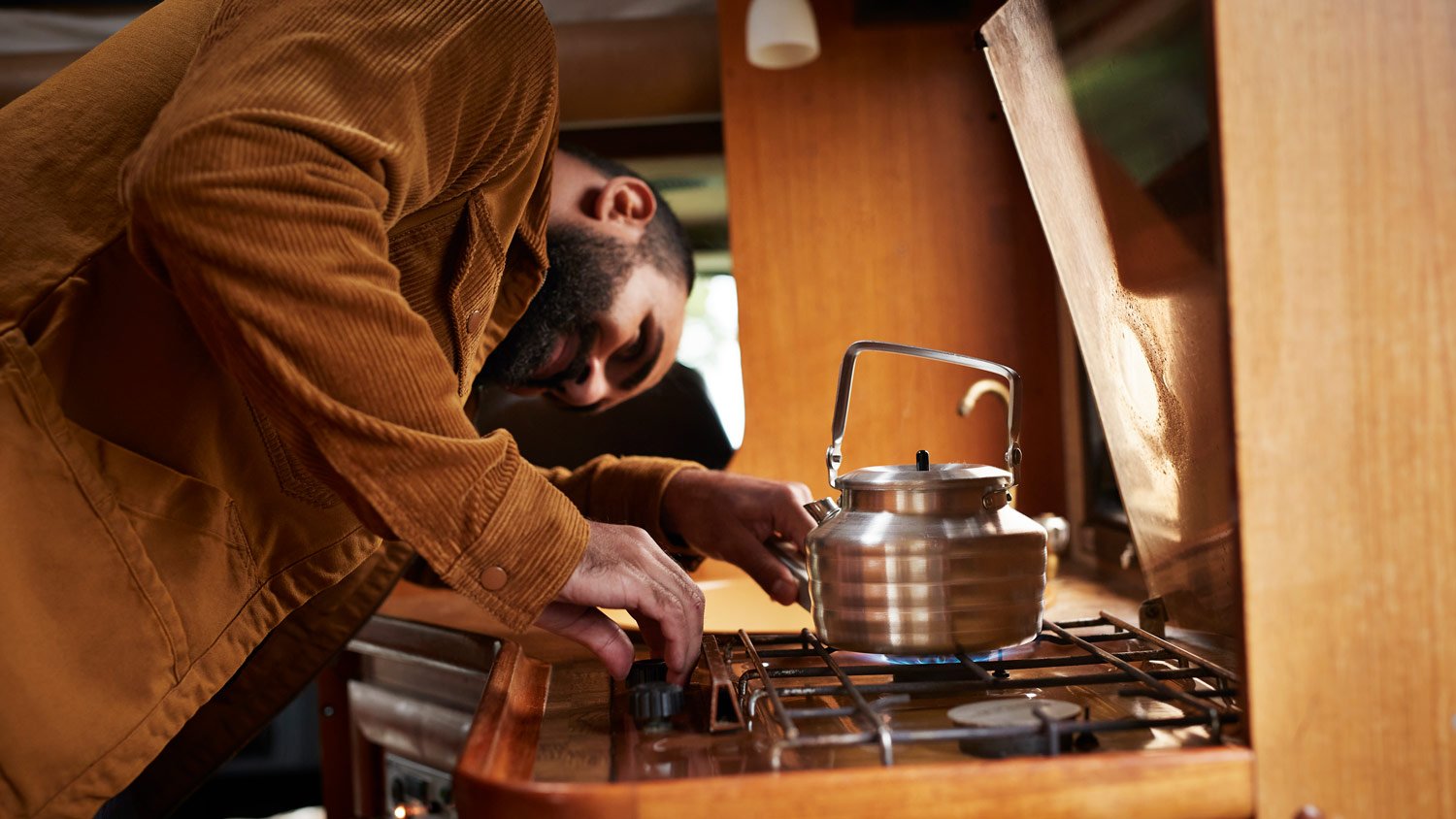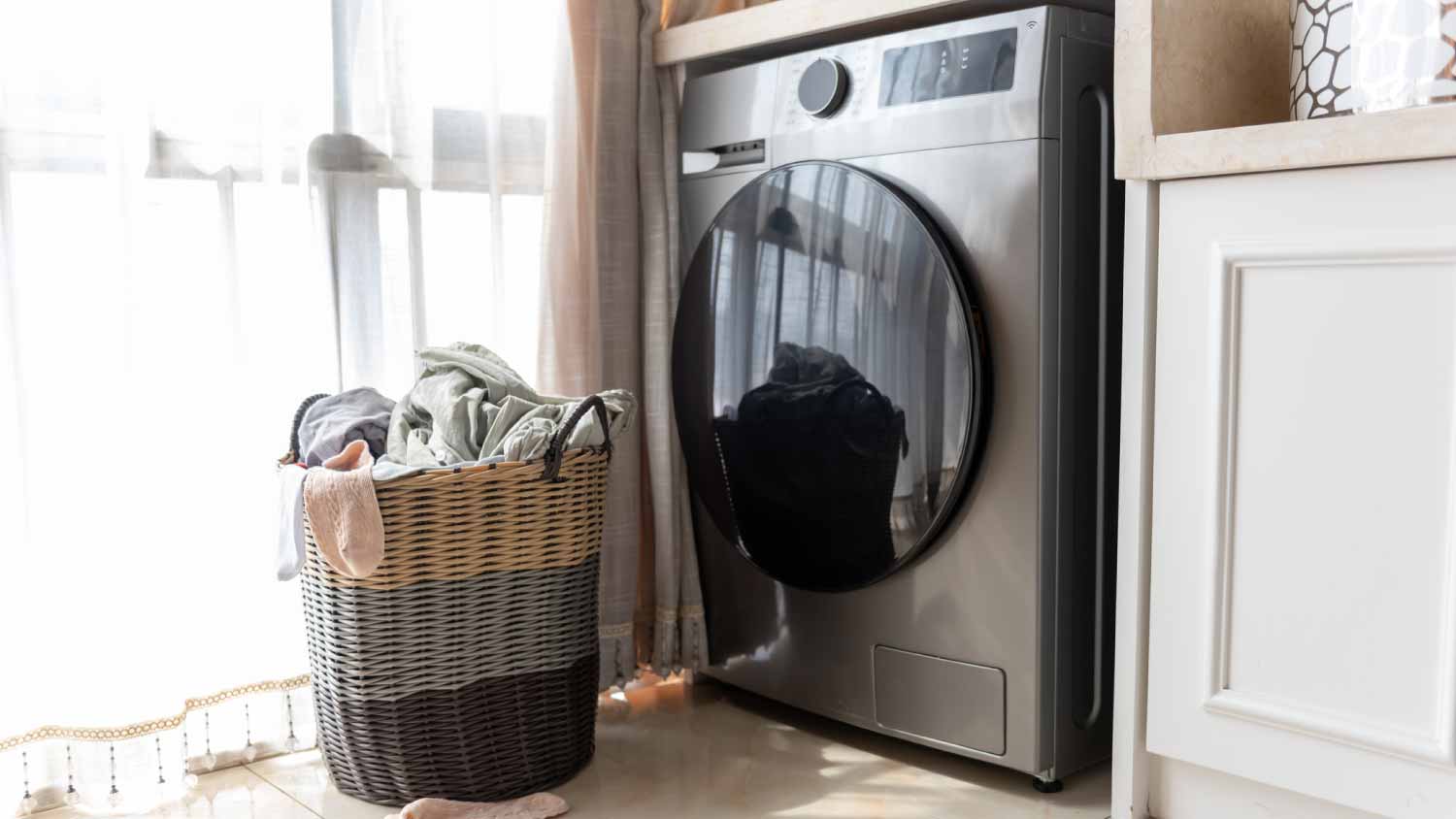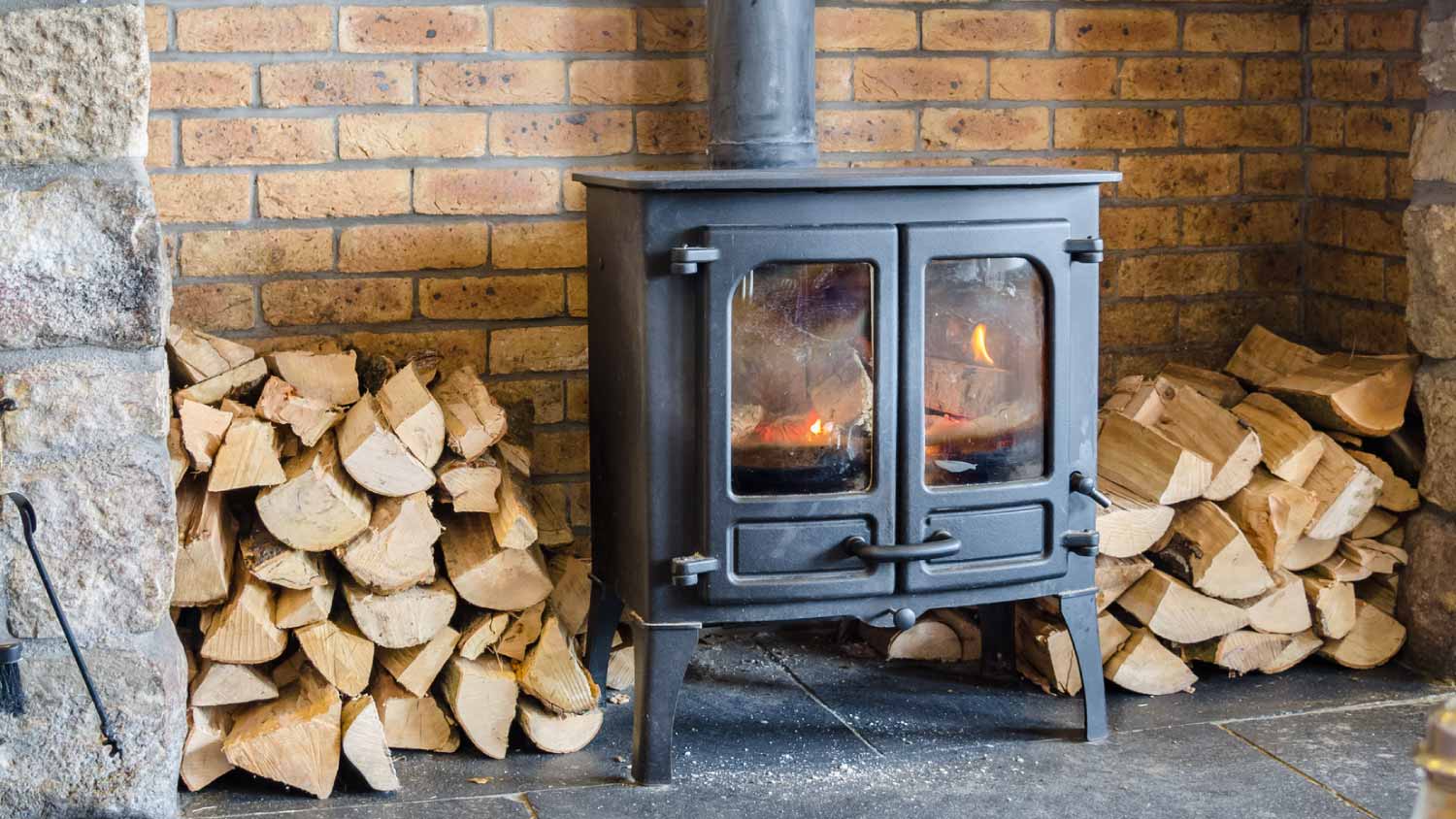Why Is My Gas Stove Not Lighting? 11 Common Issues
Ditch the matches and get your gas stove flame burning again


Debris build-up on stove parts can cause malfunctions.
Issues with gas lines are best handled by professionals.
Stoves with pilot lights may require re-lighting the flame.
It’s frustrating when you’re preparing a meal and your gas stove isn’t lighting properly. This is a common challenge that many homeowners face, and the solution could be a simple fix or require the help of a professional. If you have a problem with a gas stove not lighting, read on to learn how you can troubleshoot it.
1. Clogged Burner Holes
Over time, grease, food particles, and other debris can accumulate and block the tiny holes where the gas should flow through. This blockage can prevent the proper mixture of gas and air, resulting in a weak or nonexistent flame.
Next Steps
To resolve this issue, carefully remove the burners and use a toothbrush or a soft brush to clean out any obstructions, making sure you are gentle and thorough.
2. Dirty Igniter Components
In addition to your burner holes, dirt, grease, and debris can also accumulate on your stove’s igniter (typically found at the base of the burner) and prevent it from sparking properly.
Next Steps
This, too, can be fixed by gently cleaning it with a soft cloth or a small brush. After removing the build-up, make sure the igniter is dry before lighting the stove.
3. Moisture Issues
If your gas stove is clicking but just won’t light, the problem could be excessive moisture in the burner. Grease spills, boiling-over pots, or overly aggressive cleaning tactics could be the culprit.
Next Steps
Remove the burner cap to allow it to air out. If you can see any visible grease build-up, gently clean it up with a pipe cleaner and a mixture of dish soap and vinegar.
4. Igniter Malfunctions

For the igniter to create the spark needed to ignite the gas, it must be in the correct alignment. If it’s not properly aligned, the igniter will not generate the necessary spark and will require readjustment.
Next Steps
If you suspect the igniter is the reason your stove is not lighting but find it’s clean and properly aligned, look for signs of damage and/or wear, such as cracks, discoloration, or a worn-down tip. Your stove’s igniter can wear out over time and require replacement. Look at your local hardware store or online to find a compatible igniter, and follow the manufacturer’s installation instructions when you replace it.
5. Gas Supply Issues
A blocked or leaky gas line can prevent the gas valve from fully opening. Check to see if the gas valve is open and determine if anything is blocking it from opening. In some cases, the gas supply to your stove may have been turned off and simply needs to be turned back on.
Working with gas can be very dangerous and even harmful to your health. Only attempt gas projects yourself if you have the experience and credentials to do so safely. Otherwise, let the professionals handle these jobs.
Next Steps
If the issue persists, you may need to hire a local gas appliance professional to assess and repair your gas supply. A stove appliance repair ranges in cost between $100 and $500, depending on your stove model.
6. Faulty Safety Valve
Your stove’s safety valve controls the flow of gas to the burner and ensures safety by turning the gas off, if necessary. If your safety valve malfunctions, it may not allow the gas to reach the burner—preventing it from lighting.
Next Steps
Fixing a faulty safety valve requires the help of a professional, as it involves working with the gas line. It’s best to contact a qualified gas appliance technician to inspect and replace your safety valve.
7. Electronic Ignition Problems
If your gas stove is not lighting, it could be worth it to check if a tripped circuit breaker is to blame. Sometimes, the electrical circuit that powers the stove’s igniter can overload and cause the circuit breaker to trip and cut the power supply to your stove.
Next Steps
To fix this issue, locate your home’s electrical panel and see if any breakers are in the “off” or center positions. If you find a tripped circuit breaker, flip it back to the “on” position. This should restore power to your store and allow it to light up.
8. Gas Leak or Pressure Issues
A gas leak can prevent gas from reaching your stove’s burner and prevent it from igniting. Similarly, if there are any problems with gas pressure, it can also affect the flow of gas to your stove’s burner. These issues require immediate attention as they pose a safety risk—especially if your gas stove was left on.
Next Steps
If you suspect a gas leak, it’s critical that you turn off the gas supply and contact a professional immediately. A gas appliance technician can assess the situation, identify any leaks, and resolve pressure issues to ensure the safe operation of your gas stove.
9. Control Knob Malfunction

If your stove’s control knob is faulty or not working properly, it could prevent the gas from flowing to the burner and cause it to not ignite. To determine if this is the issue, check if the control knob is securely in place and turns smoothly.
Next Steps
If it feels loose or doesn’t turn easily, you may need to replace it. Also, check that the control knob is set to the correct position for ignition. If the problem continues, you should consult a gas appliance professional for assistance.
10. Pilot Light Out
Some gas stoves have a pilot light as their primary method of lighting the stove. This is a tiny flame located under the stovetop that lights a burner when you’re ready to use it. If this flame goes out, your burner will not light. If you have a gas stove with a pilot light, you should learn how to re-light it if it ever goes out. Quality models of stoves feature protection around the pilot light, so it’s not common for it to go out; however, it could happen.
Next Steps
Locate the pilot light valve using your stove’s owner manual. Ensuring the burners are all turned off, turn the gas knob powering the pilot light to the lowest setting or the one labeled “pilot.” The pilot light may automatically ignite, or you may need to use a long-necked lighter.
11. Vent System Problem
A range hood is an appliance that hangs above your stovetop. It acts as a vent system and helps get rid of the smoke, grease, and smells that build up while you’re cooking by filtering the air or pushing it out of your home. A downdraft range hood sits vertically behind the stove. Because of their proximity, the vents can create too much airflow, quickly extinguishing the flames of your gas stove shortly after you light them.
Next Steps
Try decreasing the speed of your range hood or increasing your burner setting to create more balance between the ventilation and the size of the flame.
Jouviane Alexandre contributed to this piece.
Frequently Asked Questions
For any household appliance that breaks down, the first step is usually repair. If you’re dealing with an older unit, your gas stove may be beyond fixing. On average, gas stoves can last between 10 to 15 years with routine maintenance. If your unit is older than that, consider a replacement. Contact a local appliance repair professional for help. They can help you weigh the pros and cons between gas vs. electric ovens and decide which oven is best for your home.
The exact cost for repair will depend on the type and extent of the damage your gas stove has sustained. However, range repairs usually cost somewhere between $100 and $500, while installing a brand new gas stove could cost you between $525 and $3,200, or an average of about $2,500. The best way to get an exact estimate is to talk to your local appliance repair professional.
If the issue is with the stove itself, you should hire an appliance repair professional who has specific experience with gas-powered appliances. If you’re having trouble with your gas supply line, a natural gas plumber could help. Always remember to report any leaks to your local natural gas company immediately.



.jpg?impolicy=leadImage)

- Appliance Repair Companies
- Washing Machine Repair
- Dryer Repair
- Refrigerator Repair
- Dishwasher Repair
- Oven Repair
- Wood & Pellet Stove Repair
- Freezer Repair Services
- Wood Stove Services
- Gas Stove Repair
- Emergency Appliance Repair Companies
- Ice Maker Repair
- Gas Appliance Repair
- GE Appliance Repair
- GE Refrigerator Repair
- GE Dryer Repair
- GE Dishwasher Repair
- GE Washing Machine Repair
- Samsung Appliance Repair
- Samsung Refrigerator Repair
- Samsung Dryer Repair
- Samsung Washer Repair
- Samsung Dishwasher Repair
- Samsung Oven Repair
- Whirlpool Repair
- Whirlpool Refrigerator Repair
- Whirlpool Washer Repair
- Whirlpool Dryer Repair
- Whirlpool Oven Repair
- Maytag Appliance Repair
- Maytag Refrigerator Repair
- Maytag Washer Repair
- Maytag Dryer Repair
- Maytag Dishwasher Repair
- Kitchenaid Appliance Repair
- Kitchenaid Oven Repair
- Kitchenaid Refrigerator Repair
- Kenmore Appliance Repair
- Kenmore Dishwasher Repair
- Kenmore Washer Repair
- Kenmore Dryer Repair
- LG Refrigerator Repair
- Bosch Appliance Repair
- Kenmore Refrigerator Repair
- LG Appliance Repair Services
- GE Microwave Repair
- Electrolux Appliance Repair
- Electrolux Washer Repair
- Kitchenaid Dishwasher Repair Services
- Wood Stove Inspection
- Dishwasher Installation
- Trash Compactor Repair
- Who Fixes Gas Stoves?
- How Long Do Gas Stoves Last?
- What to Do if Your Gas Stove Was Left on Without a Flame
- What Are the Parts of a Stove?
- How to Light a Gas Fireplace No Matter the Remote or Switch Type
- Should You Convert Your Electric Stove to Gas? 5 Things to Consider
- Why Your Oven Smells Like Gas and What To Do About It
- My Gas Oven Smells Like Gas Whether On or Off, Not the Stove Top. What Would Cause This?
- 5 Types of Stoves to Consider for Your Kitchen
- Stove Dimensions: A Guide to Measuring All Range Sizes











